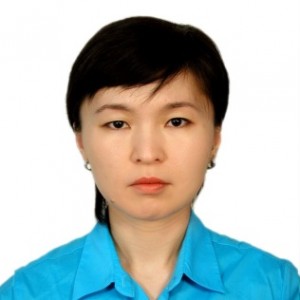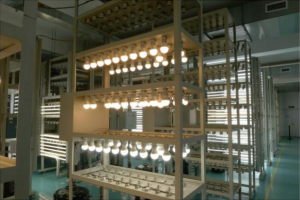Today, the lighting market has changed significantly. When we go to the store, it’s not only incandescent lamps we can buy; in fact, these kinds of lamps are becoming obsolete. Their purchase and production are already banned in Kazakhstan by the law “On energy saving and energy efficiency,” which came into force on July 26, 2012. Incandescent bulbs of 25 watts and above are also banned in the country.
Now, energy efficient lamps are represented mostly by luminescent and light-emitting diode (LED) lamps. The latter are becoming more and more popular in view of their rapid technological development and their price adjustments. Apparently, these days, LED technology is the priority technology to be promoted in the field of energy efficient lighting.
However, while transferring to the best energy efficient lighting technologies, we should first check if those technologies are of a good quality. So how can we protect ourselves against poor quality, black market or fake products?
In order to protect the national lighting market, there should be an institution that can verify the quality of lighting products: a laboratory legally and officially accredited to perform tests for checking lighting products’ quality.
Before taking the decision to establish a lighting laboratory, it is necessary to do an analysis: how much does a country need such a lab? If it really does, what scale should the lab have?
Let’s take Australia as an example. Australia doesn’t have a large lighting laboratory; it has two small labs, but for most lighting products, the country prefers to work with the Global Efficient Lighting Centre (GELC) in Beijing, China, which is based within the National Lighting Test Centre of China, one of the most advanced laboratories in the world. The lab was formed through the United Nations Environment Programme (UNEP). Australia is a country with arelatively small population, so after economic calculations were made, it was decided that for them, it would be better to send lighting samples to the GELC for testing than to launch and maintain a local laboratory. This approach is more sustainable and efficient since the GELC has all the necessary facilities and professional staff.
Considering the geographical and demographic similarity between Australia and Kazakhstan, like vast areas and small populations, plus Kazakhstan’s proximity to China, the shipment of samples to the GELC looks like an appropriate method.
However, if Kazakhstan chooses not to work through an out-of-country testing method, especially in view of the global load on the GELC, then the idea of a new laboratory may seem quite reasonable. In Kazakhstan, there could be one good laboratory for instance, in Almaty. It could even be a regional laboratory for all of Central Asia, always functioning at capacity and serving neighbouring countries. Furthermore, the services that such a regional laboratory could provide would bring in money. After a number of years, the regional lighting testing laboratory could develop into a more acclaimed and international lighting test and research facility. In any case, a new laboratory would create more opportunities and more jobs.
So, what are the reasons to found a lighting test laboratory? Obviously, China has an advanced lighting test centre: China is a major lighting producer and a major consumer of lighting goods. Moreover, the GELC in Beijing not only tests lighting products, but also serves as a platform for research, so it functions partly as a lighting scientific centre. It should be mentioned that at the GELC, lighting products go through a large number of various tests, like light intensity and light distribution, eye comfort, colour rendering, fire safety, lamp service life and many others.
The insights into other countries’ experiences related to lighting laboratory launching, like approximate expenses, time periods and planning, give Kazakhstan certain directions and might help if Kazakhstan does start planning a project to establish its own full scale lighting laboratory.
During the Global Efficient Lighting Forum, which took place in Beijing on Nov. 10 – 11, 2014, Peter Bennich, director of the Energy Efficiency Department of the Swedish Energy Agency, shared the Swedish experience of establishing a lighting testing laboratory. Through help from the GELC, Sweden launched its own lighting testing laboratory which took them one and half years and cost 1 million euros. The Swedish representatives said that it is totally paying off. Now, the Swedish lighting laboratory is run by three full-time employees. It was also mentioned that if the laboratory is accredited internationally, then it may work globally and provide an opportunity to have a common proficiency test for lab personnel. International harmonisation is another positive value from which everybody gains. The laboratory not only tests lighting products, but also trains personnel and teaches other labs how to test lighting products.
If, after looking around the Asian region, stakeholders in Kazakhstan don’t find appropriate lighting test laboratories that are nearby and suitable for quality control of Kazakhstan’s lighting market, and a decision is reached to set up a national laboratory, then a few steps should be taken before work on the lab begins.
First of all, an analysis should be conducted to compare the current needs for lighting products’ quality control and its probable future dynamics with the existing lighting testing facilities. If establishing a national lighting test laboratory proves to be reasonable and profitable, then the lab’s scale should be designed accordingly.
The choice to establish a lighting laboratory can be challenging, but it should be justified and reasonable. The laboratory should not end up abandoned someday, thus making all the investment and staff training in vain. Unfortunately, this has happened in Southeast Asia.
To function well, a lighting test laboratory should have proper maintenance and state control. Lab funding is greatly affected by maintenance issues and should correspond to the current national and/or regional needs.
In terms of its professional capacity, the laboratory should constantly update its methodologies, see what other products can be tested, look for not only integration but also collaboration on testing efforts, share experiences, et cetera.
On the whole, Kazakhstan is looking positively at improvement of the system that protects the quality of the national lighting market. The UNDP/Global Environment Facility project, “Promotion of energy efficient lighting in Kazakhstan,” actively works toward this. Project experts discussed quality control of lighting products with state officials, technical specialists and lighting professionals. Through those meetings and discussions, it was found out that the majority of specialists have a common opinion: that Kazakhstan needs more effective mechanisms of quality control as a part of the certification and verification system for lighting products. A testing laboratory for domestic lighting market products is an important aspect of this system.
Summing up the considerations on a new lighting test laboratory, it can be said that such a facility, if launched in Kazakhstan, should practice constant professional and technical growth and reach out and provide high quality services to become an internationally recognised testing and research centre.
The author is a public relations expert with the UNDP/GEF project, “Promotion of energy efficient lighting in Kazakhstan.”




